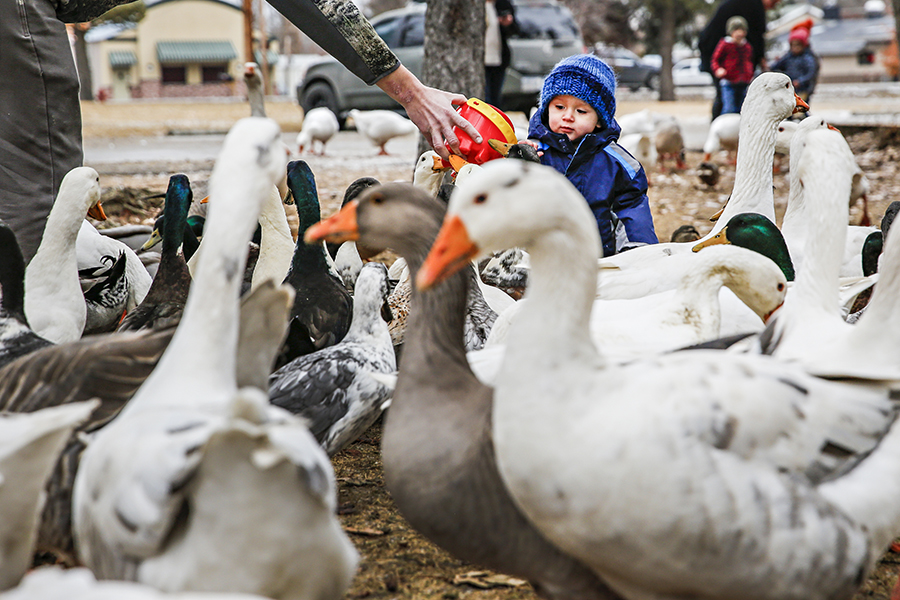After years of negative impacts caused by waterfowl overpopulation in Kalispell’s Woodland Park, the city council will consider options to reduce the density at its meeting on Feb. 10.
The “Restoring Back to Nature” project aims to control the geese and duck population, which has created a variety of issues in the park including degraded pond health, wildlife-human conflicts, feces accumulation, overgrazing, vehicle safety hazards and increased disease.
Options to control the waterfowl population and reduce their impacts include eliminating or reducing public feeding, euthanization, egg removal and installing beacons and flashing lights.
Montana Fish, Wildlife and Parks and Kalispell Parks and Recreation are working to post informative signs and provide education to the public in hopes of discouraging waterfowl feeding. A capture and euthanize method is also being strongly considered to remove the geese and ducks entirely.
Public feeding has become an issue in Woodland Park, officials say, because it provides little nutritional value to the waterfowl, resulting in angel wing, a crippling disease, and deformations. It also results in a high bird density, which increases competition in an environment that wouldn’t normally support them. Feeding can cause a more aggressive behavior towards humans and birds continue to congregate near the playground and walking trails.
Artificial feeding also causes an alternation in migratory patterns, has increased gull presence in the park and caused an increased concentration of feces, creating unsanitary conditions. Park officials say they have received several complaints regarding feces throughout the park.
As a result of the bird overpopulation, the overall species health is deteriorating because of interbreeding, which is causing a lack of genetic diversity and increased disease spread. Since the normally migratory birds tend to stay in the park, they are cohabitating and breeding with domestic birds.
According to the report, the public has continued to dump exotic, nonnative, domestic species including rabbits, chickens and other waterfowl in the park, especially after Easter.
While FWP and the Kalispell Parks and Recreation have proposed the capture and euthanization of the waterfowl, they have assembled other options to discuss with the public.
Eliminating public feeding would reduce many negative impacts. However, a new ordinance would need to be adopted and officials are concerned it would be difficult to enforce.
Goose egg addling is another option that involves temporarily removing fertilized eggs from the nest, terminating embryo development and placing the egg back into the nest. Similarly, egging would remove the goose egg from the nest entirely. Both methods would achieve a similar result, causing a gradual population decline, however it is labor intensive and would take several years.
Beacons, or flashing lights, are a non-intrusive option, which would deter the waterfowl. However the lights would only affect Canada geese since domestic geese are incapable of flying elsewhere and ducks would be unaffected.
The City of Kalispell will host several open houses and educational workshops throughout in the coming months.
The public meeting will be held Feb. 10 at 7 p.m. at the City Hall Council Chambers at 201 First Ave. E.
